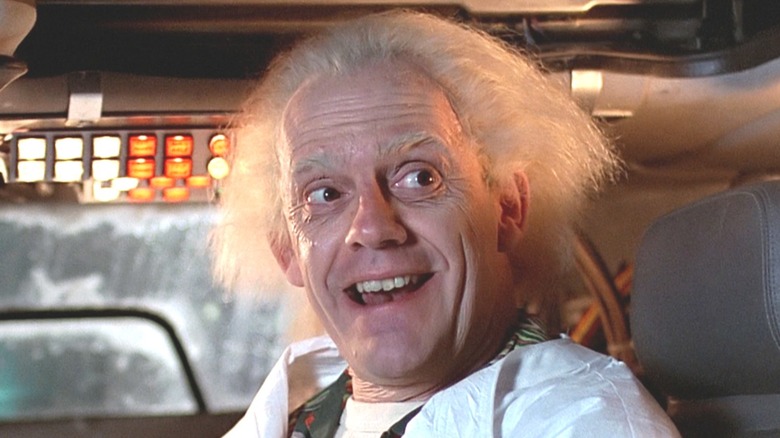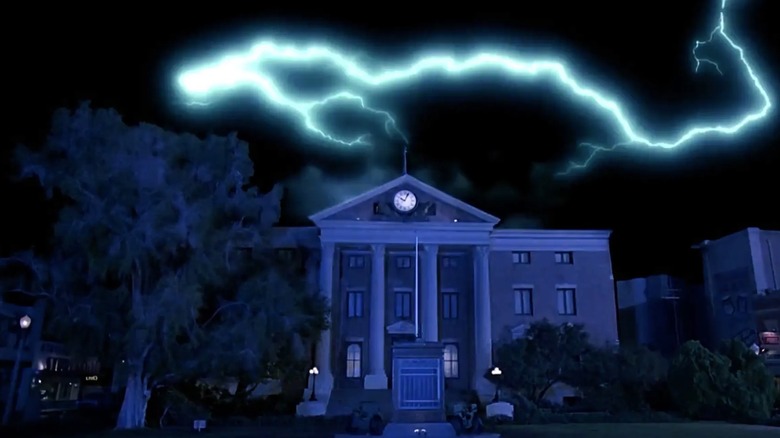The Footage You Never Noticed Was Reused In Every Back To The Future Movie
In the often divisive annals of 1980s cinema, Robert Zemeckis' kooky sci-fi stunner "Back to the Future" is one of a maybe a handful of films pretty much everyone is comfortable calling a classic. Said fact is reflected in the film's near-perfect Rotten Tomatoes scores – which isn't much of a surprise considering it's one of the greatest time-travel movies ever made. Released in the Summer of 1985, "Back to the Future" found Michael J. Fox portraying Marty McFly, a hard-rocking '80s teen who — with the help of a tricked out DeLorean-turned-time-machine by his mad-scientist pal Doc Brown (Christopher Lloyd) — finds himself stranded in the 1950s.
Trapped, and with no clear way home, Marty spends the bulk of the movie avoiding the lustful advances of his teenaged mom (Lea Thompson), pushing his teenaged father (Crispin Glover) to step up and win the woman's heart, and convincing a younger Doc Brown to help him find a way home before he's inadvertently erased from existence. That last endeavor involves Doc and Marty attempting to harness the power of the infamous lightning strike that disabled the clock tower in the heart of downtown Twin Pines. The, ahem, electrifying event in question occurs in the final act of "Back to the Future," and it remains not just one of the movie's most iconic moments, but one of the decade's.
Back to the Future's famous lighting bolt sequence was so good, it was used in all three movies
You may not realize it, but that footage actually made its way into both "Back the Future" sequels too. That's not entirely surprising as the Flux Capacitor-activating set piece and the footage depicting it became such a seminal moment in franchise lore. And even as the ensuing sequels jumped back and forth in the series' timeline with little regard for how Doc's and Marty's adventures might affect the time-space continuum at a macro level, the over-arching narrative hinged mightily on Marty's lightning powered escape to the '80s in the original film.
As it was, the scene became such an iconic "Back to the Future" moment, the footage more or less had to be used in the sequels if only for continuity purposes. And according to the book "We Don't Need Roads: The Making of the Back to the Future Trilogy" (via Showbiz Cheat Sheet) the thrillingly executed moment is the only sequence of footage that shows up in every one of the three movies.
It's a legitimate testament to Zemeckis' appreciation of the entire "Back to the Future" team's finished product that he didn't feel the need to re-shoot it for either sequel, even as those movies larger budgets almost certainly would've allowed for such an indulgence. And really, why mess with perfection?

